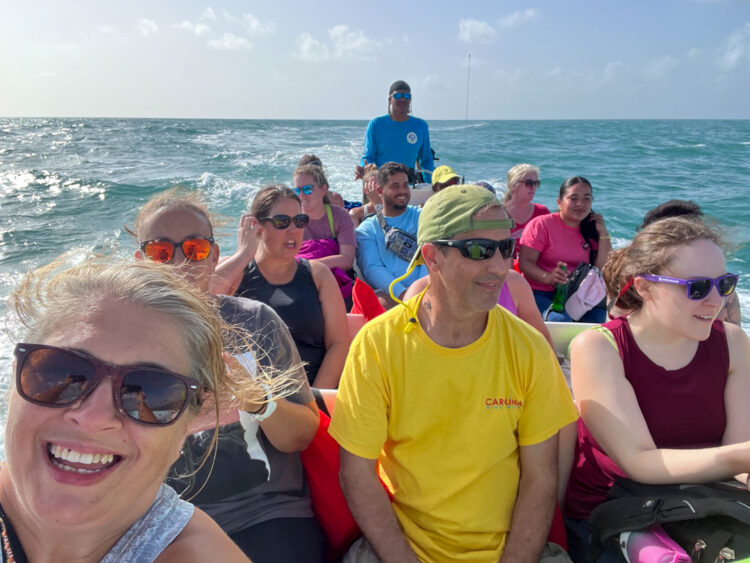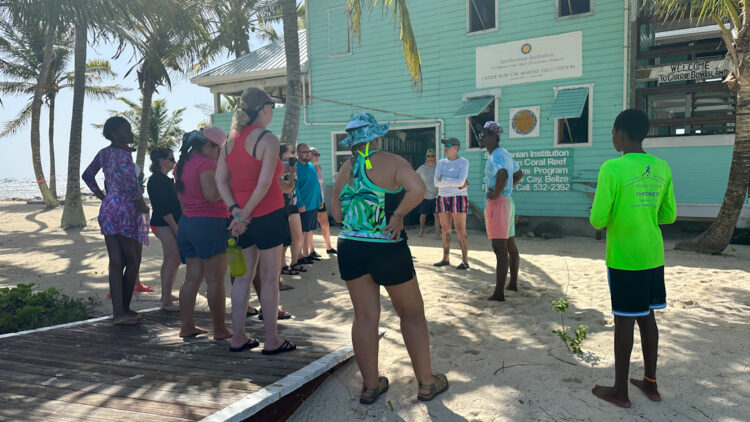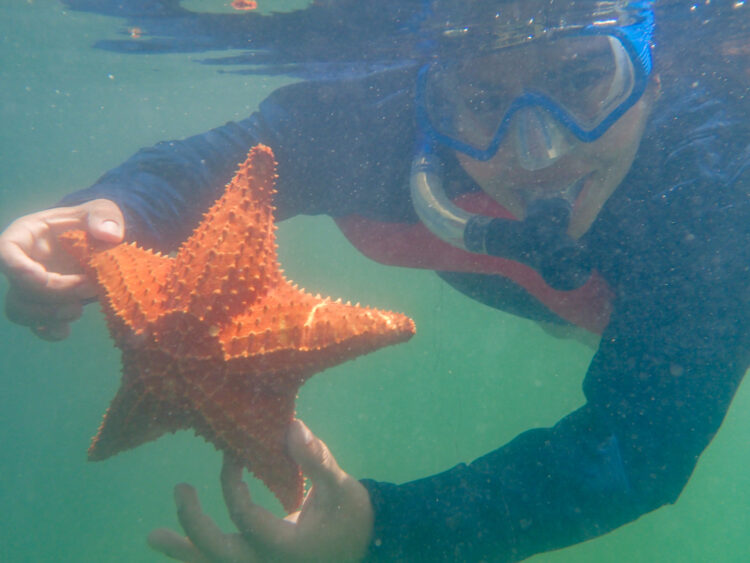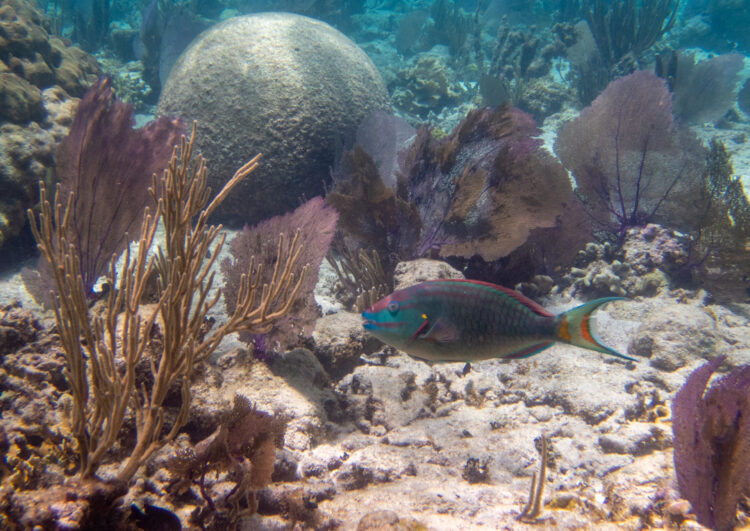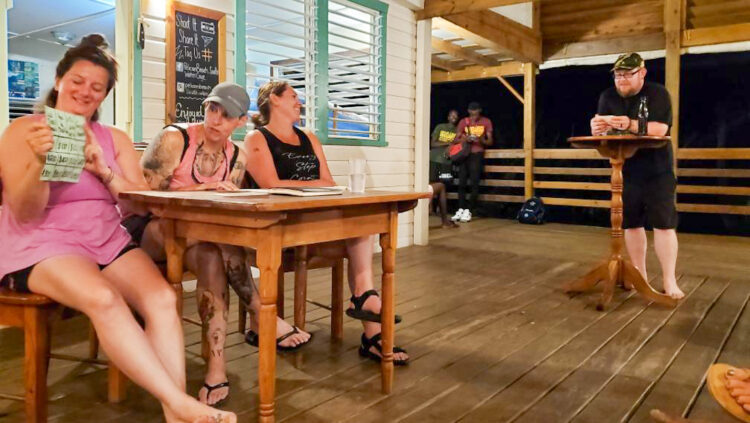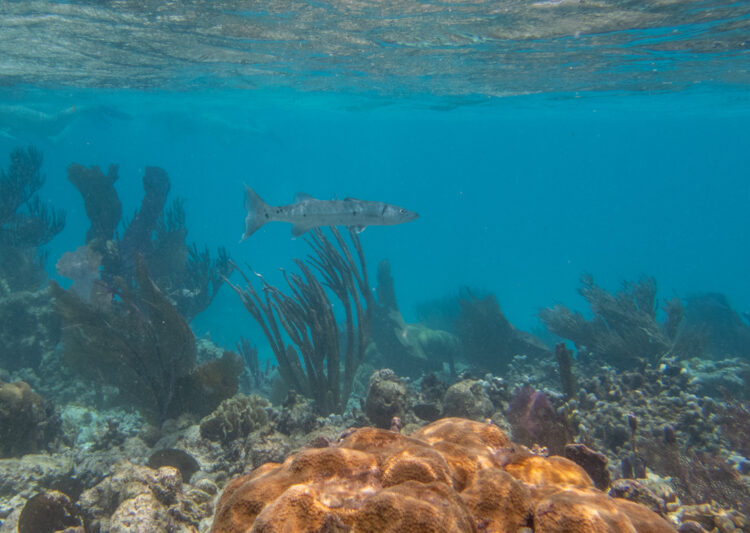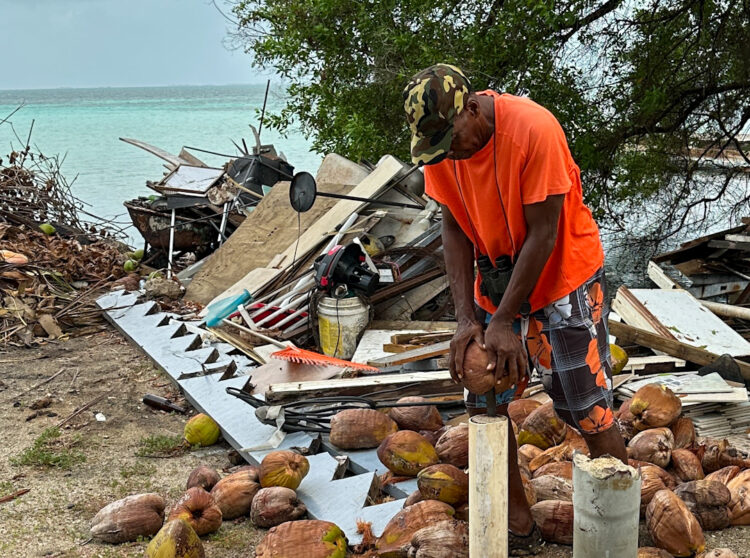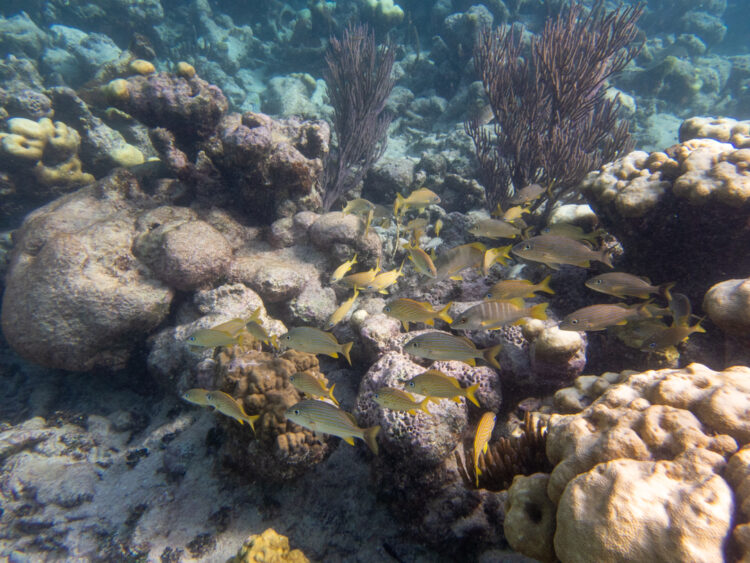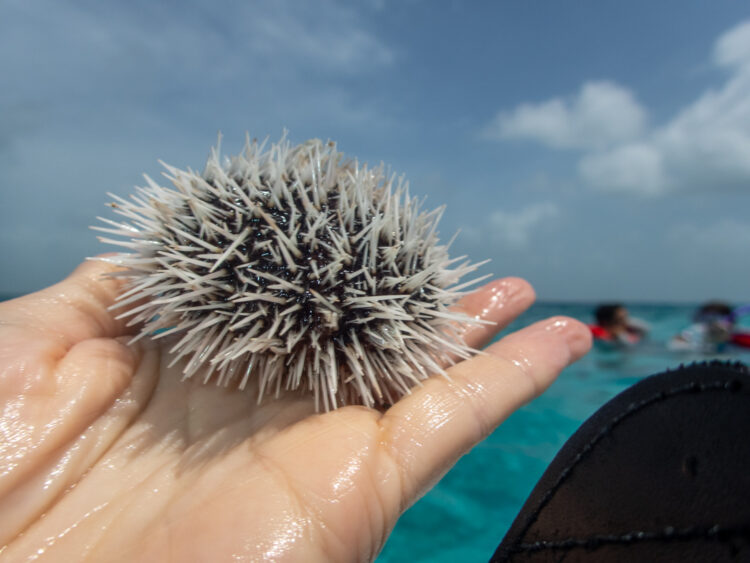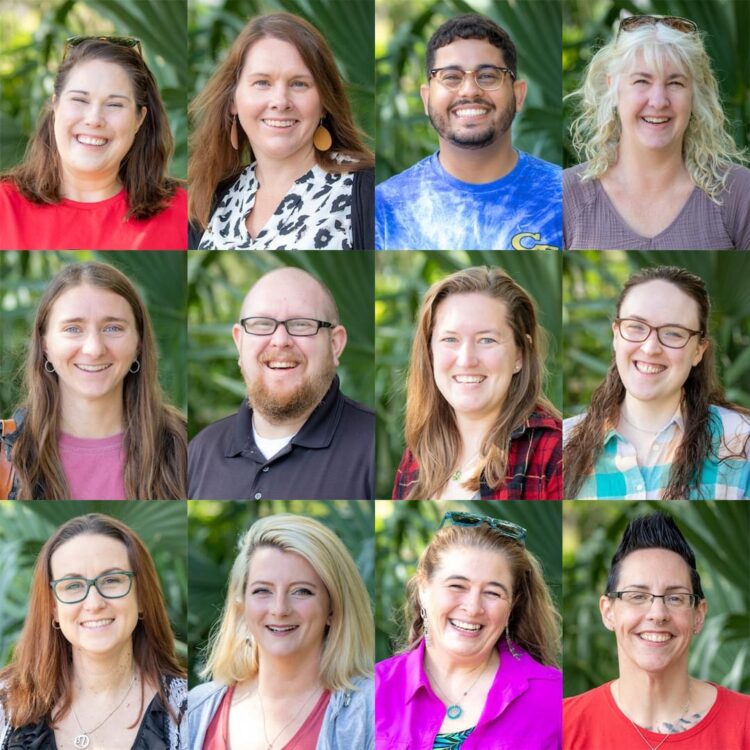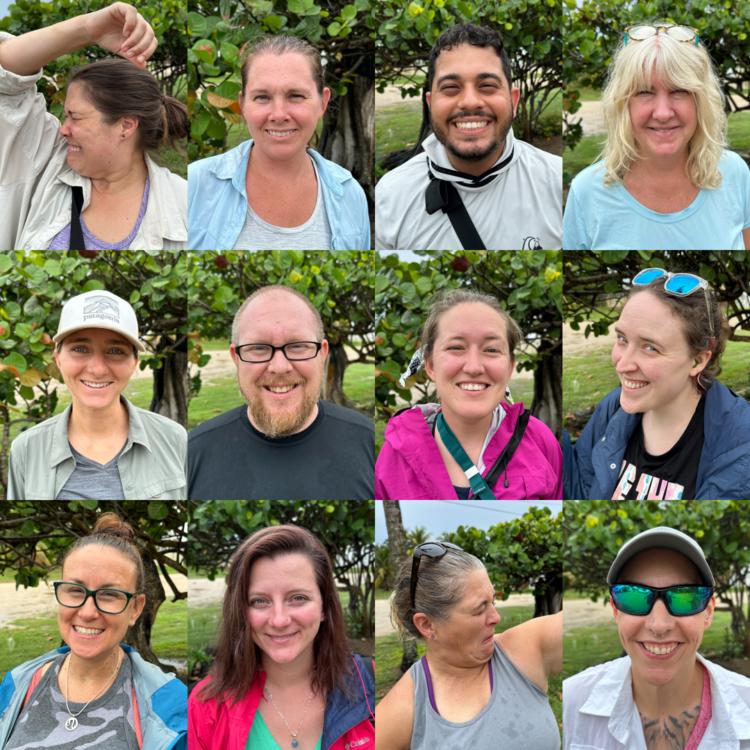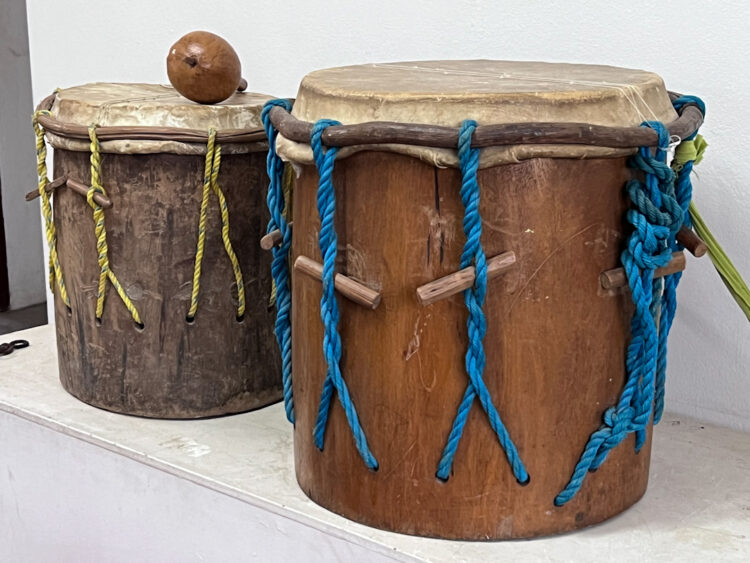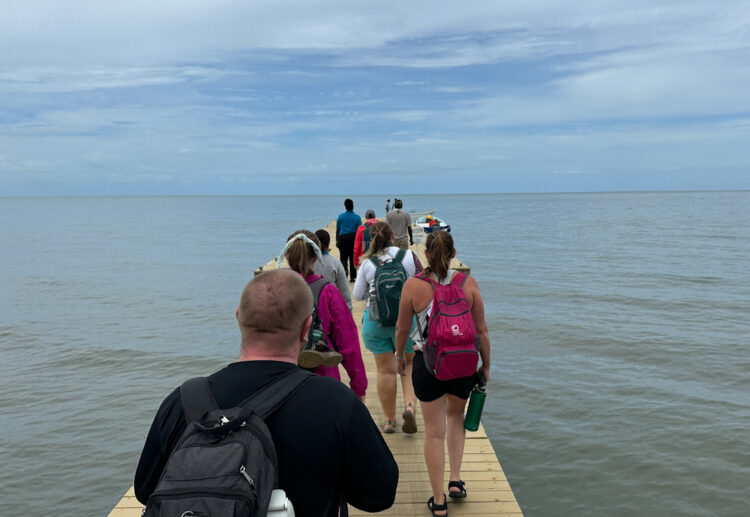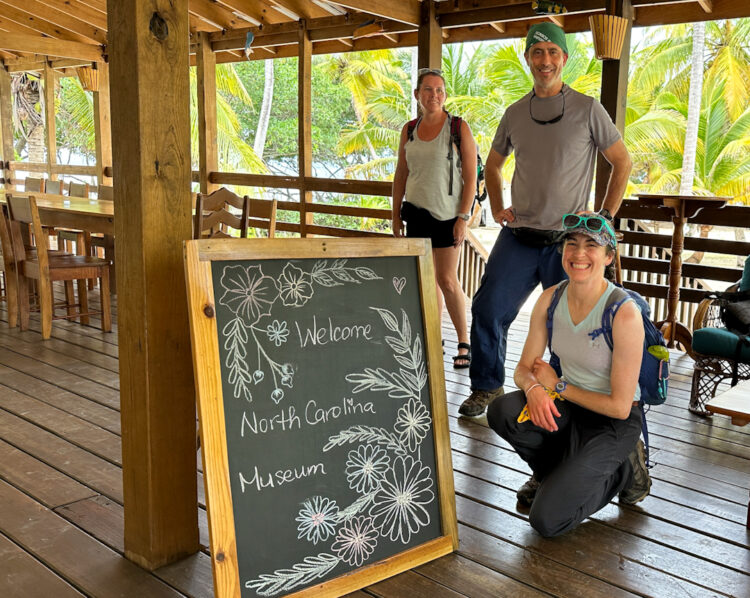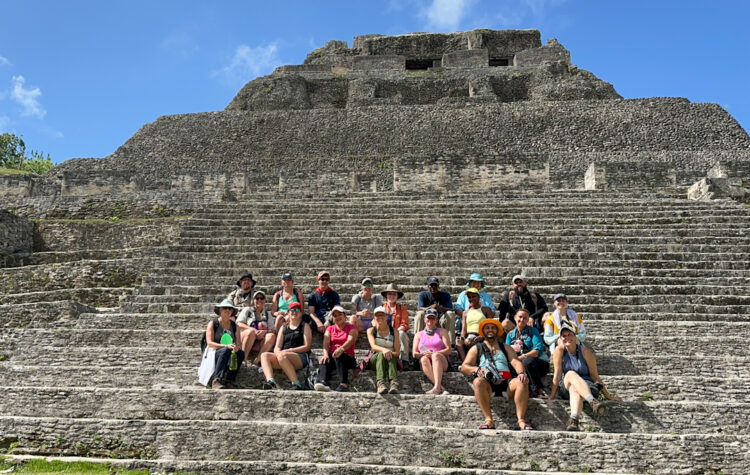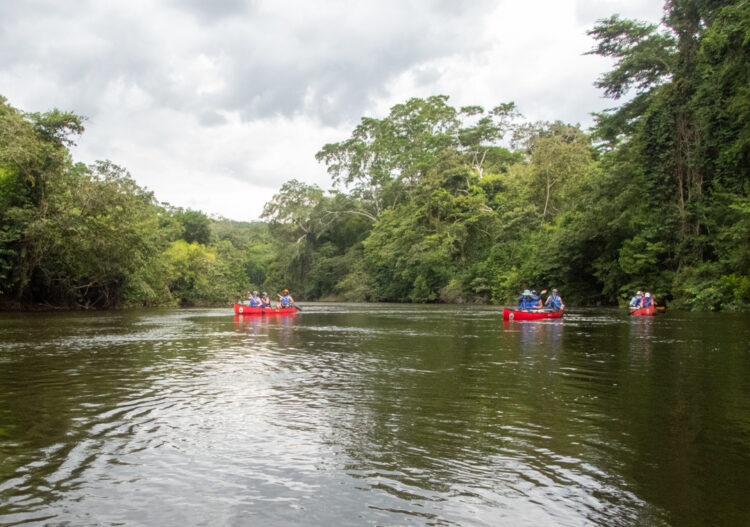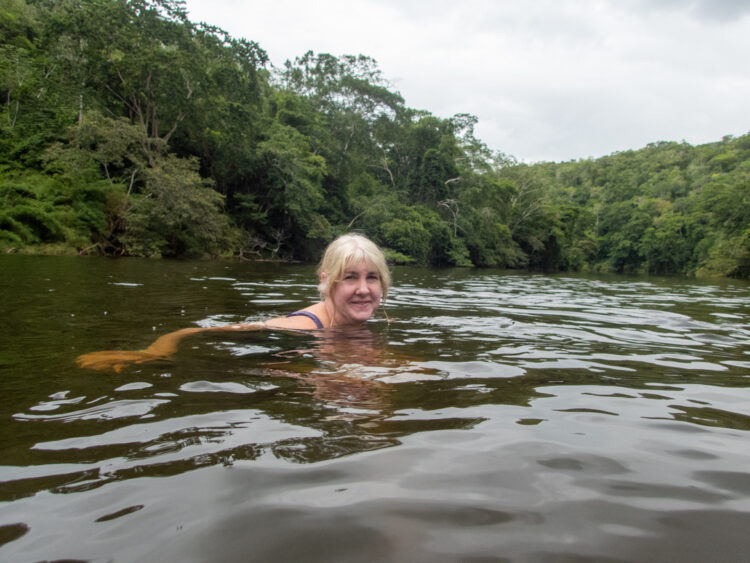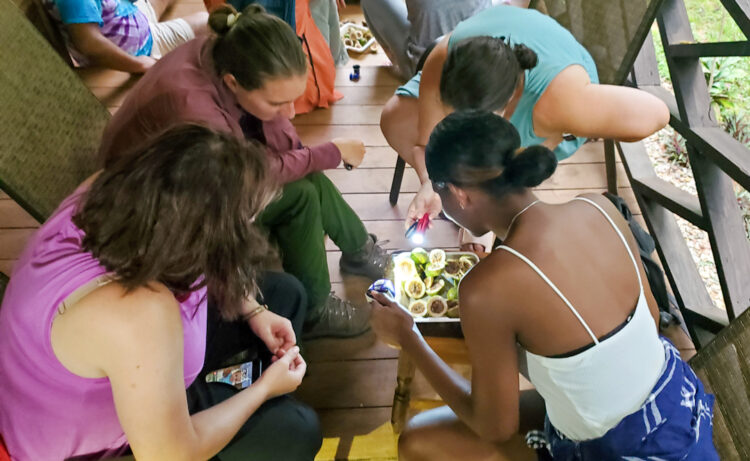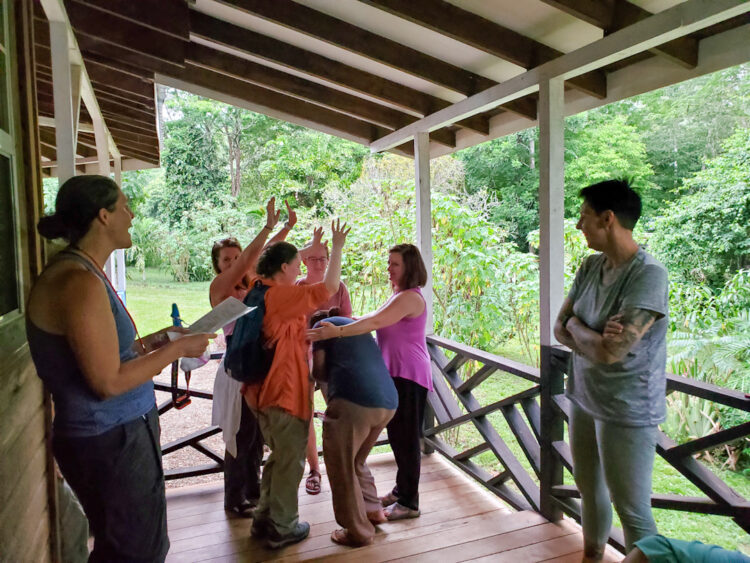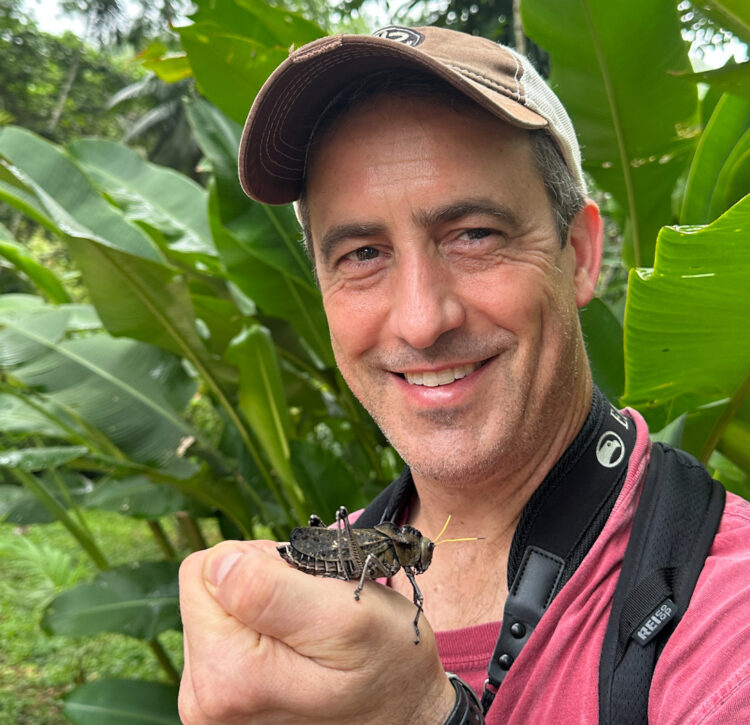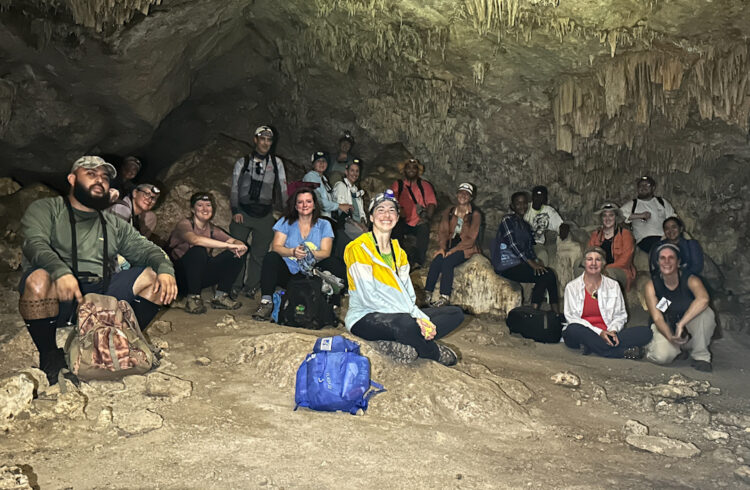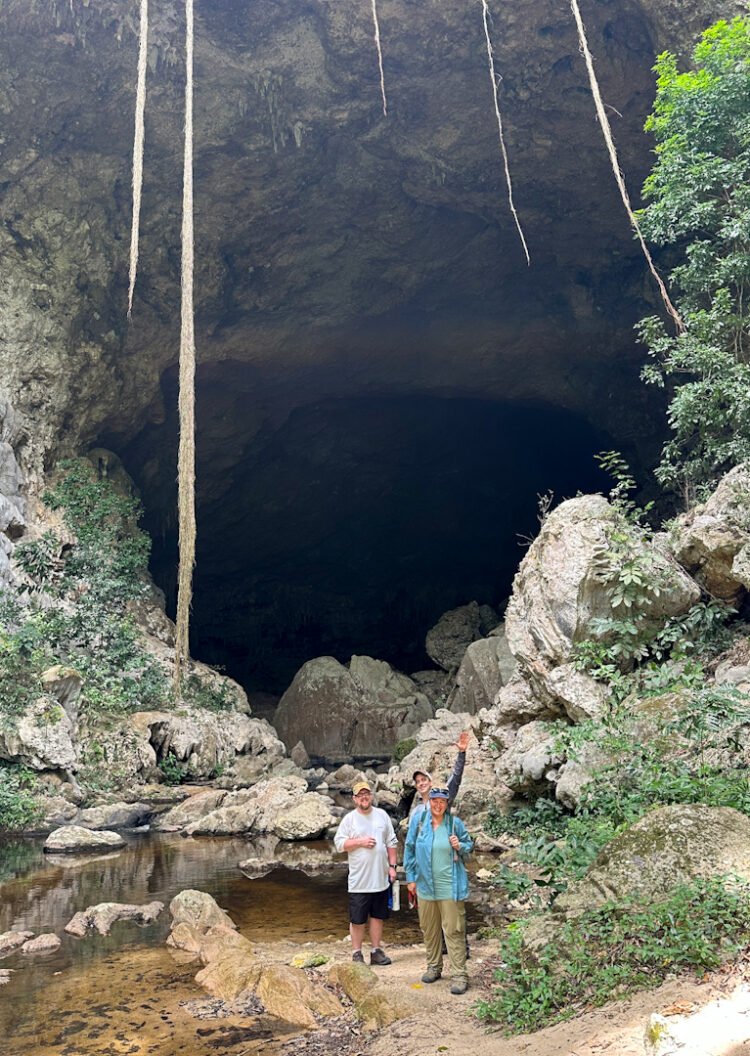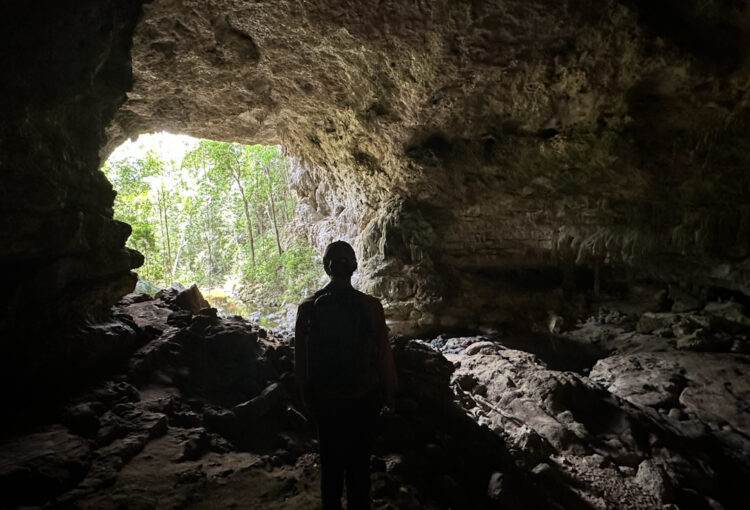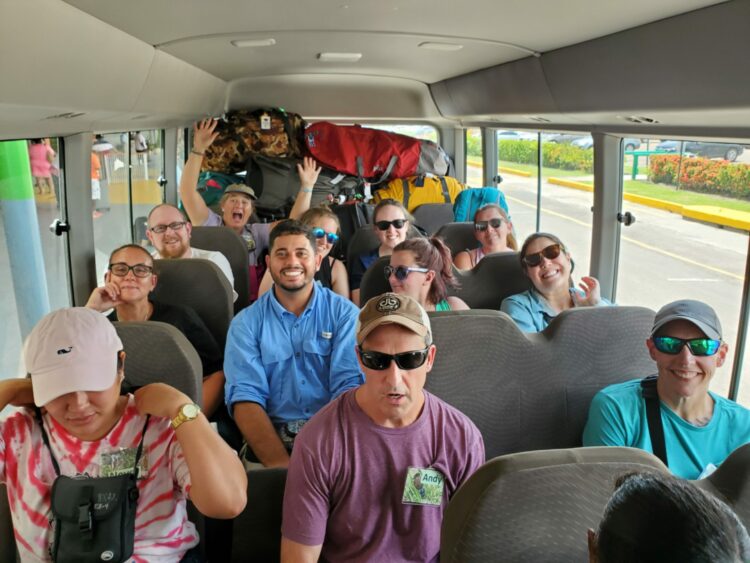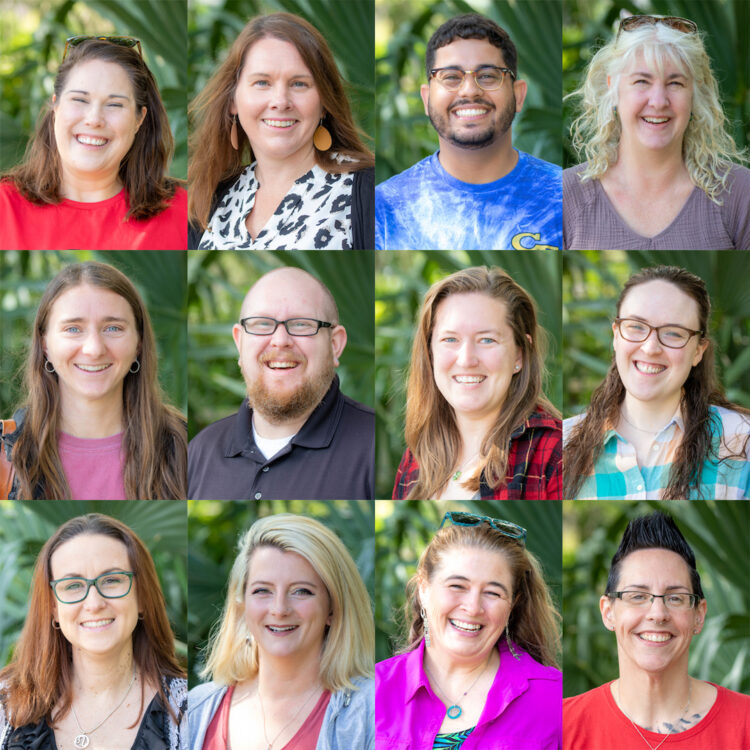July 20, 2023
Despite the rain on day four, we were still able to fulfill all our planned experiences! It was our last day at the Sweet Songs Jungle Resort, and we started the day by eating breakfast before loading the bus. Then, we rode 29 miles down the George Price Highway to the Belize Zoo. The zoo is home to the rehabilitated, orphaned and rescued wildlife of Belize. With the help of our outstanding tour guide Jose, we had the chance to explore. He responded to all inquiries, told tales, and provided some background information on the creatures we saw. We observed many different species including coatimundis, harpy eagles, pumas, tapirs, howler monkeys, ocelots, river otters, white-tailed deer, crested iguanas, scarlet macaws and a great number of others.
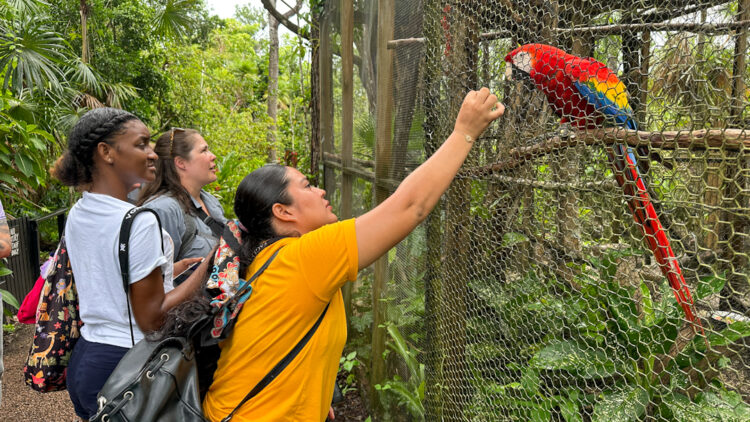
Neysy feeding a peanut to one of the Zoo’s scarlet macaws
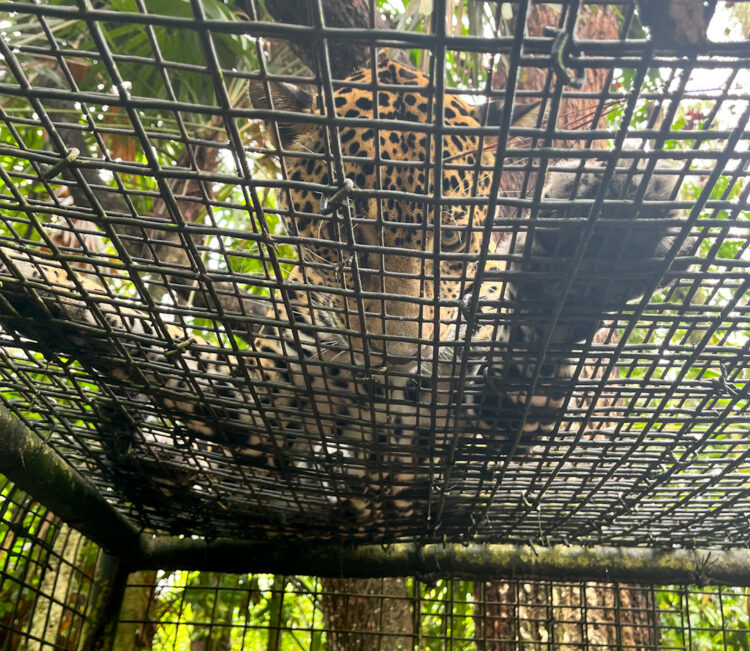
One of our groups got the chance to enter a cage where guests have the chance to interact with Lindo, one of the Zoo’s jaguars. Lindo has been trained to give high fives!
It was exciting to visit the Belize Zoo, a place we had become familiar with through the “Last Flight of the Scarlet Macaw” nonfiction novel we were given in preparation for our trip. Many in the group remarked on how amazing it was to see these beautiful and strange (to us) creatures. It felt almost like seeing them in their natural habitat, as the Belize Zoo has taken great care to maintain their enclosures in such a way that they are almost identical to what the animals would have in the wild. Unlike some zoos in North America where the enclosures have sparse vegetation for almost guaranteed views of the animals, this zoo had enclosures dense with foliage that means the habitat is more like a home away from home.
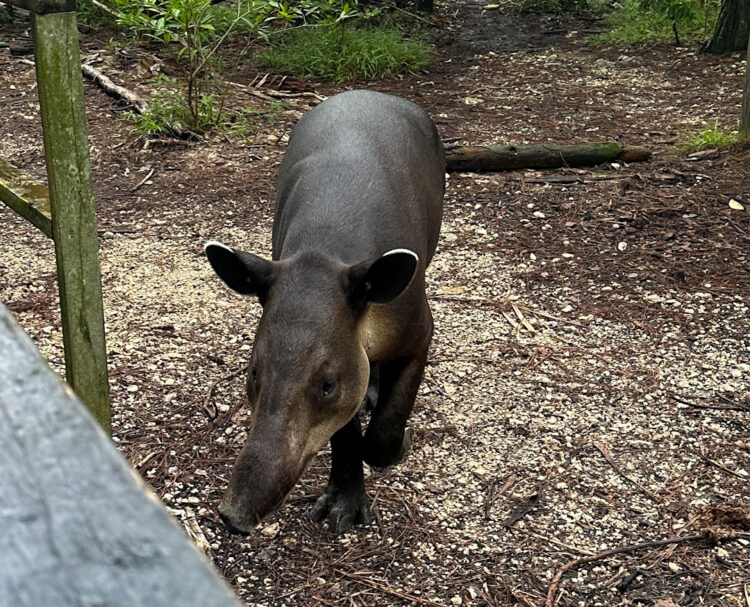
A Baird’s tapir.
Blue Hole National Park was our next stop; a popular tourist attraction due to its vividly blue water, created by the reflection of the sunlight on the limestone underneath. This is the site of a former cavern which had collapsed. We did a quick change from our sweaty, sticky clothes to take a quick dip in this 37-foot-deep cenote. This felt amazing after a humid morning of trekking through the zoo.
From there we left for our day’s final destination: our new, two-day accommodations in the Jaguar Preserve located in the Cockscomb Basin Wildlife Sanctuary. This new lodging is much like your traditional summer camp cabins (and a tad more rustic than our last accommodations). After having checked off a lot of species we could identify at our previous lodgings, we were excited to be in a new environment where our chances of seeing new species increased.
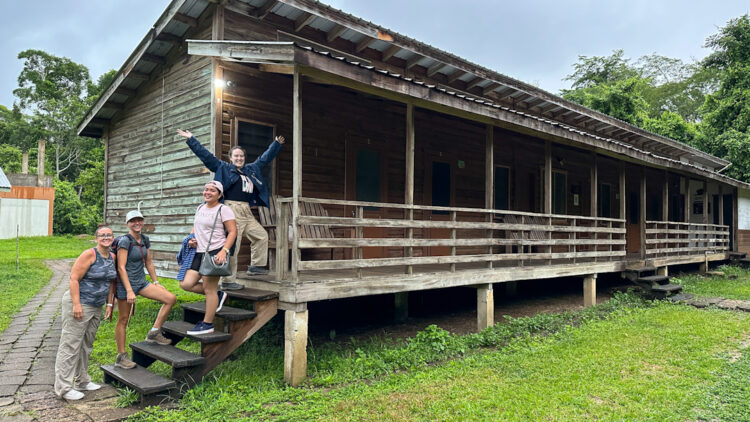
Our home in the Cockscomb Basin Wildlife Sanctuary!
After settling in, we were treated to dinner prepared by Ernesto and Aurora Saqio, a previous Jaguar Preserve director and his wife. We got to taste traditional Maya foods we had not yet had a chance to try, including amazing tamales.
Finally, we ended the day with a night walk and were rewarded with seeing a plethora of treefrog species. We were fortunate that today was as rainy as it was. Belize has been experiencing a drought and with the rains today it brought out many of these frogs, who are mating and laying eggs on the tree leaves above us. Now we are off to bed to prepare for tomorrow’s adventures!
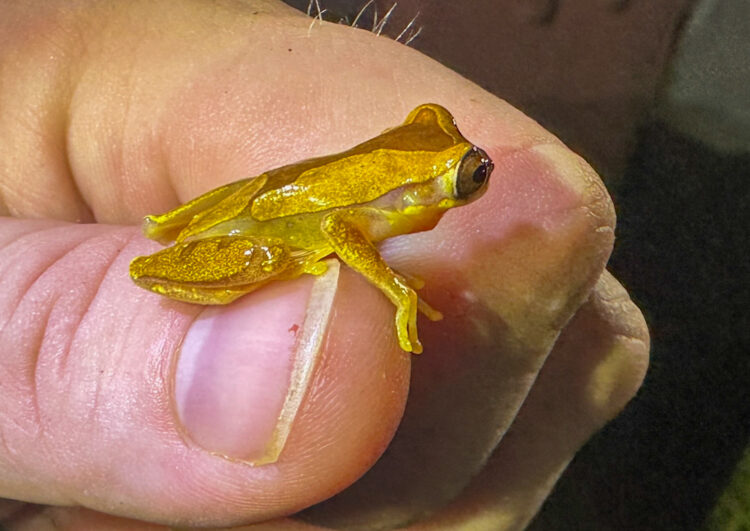
Yellow tree frog.
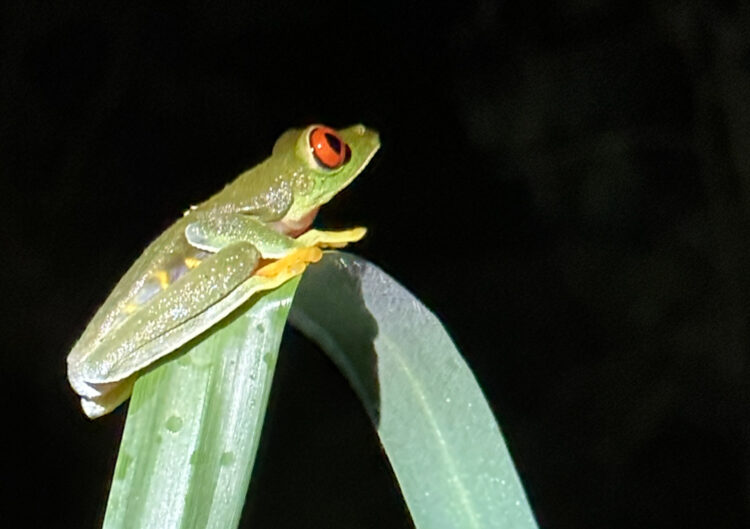
Red-eyed treefrog (now called Taylor’s leaf frog).
July 21, 2023
Today was our full day at Cockscomb Basin Wildlife Sanctuary! We started off with our morning bird walk, where we walked down to the river and started to orient ourselves to the Preserve. After some much-needed downtime, we walked part of the Ben’s Bluff Trail to a waterfall for some swimming. Behind the waterfall, we found a small cave and a swallowtail swift nest! The waterfall was both cooling and provided some free massages (thanks to the pounding water). After returning to camp, we enjoyed a little more downtime and a delicious lunch.
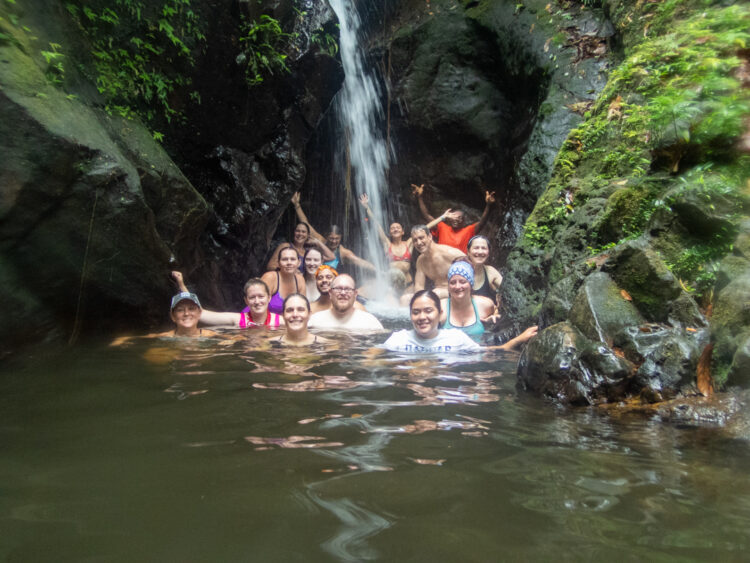
The waterfall was a great swimming hole!
In the afternoon, we traveled out of the Preserve to Maya Center for the afternoon! We were able to grab some ice cream and gifts from the Maya Women’s Center. The gifts at the Maya Women’s Center are all handcrafted and used to help connect Jaguar Preserve visitors to the community. We enjoyed our short shopping trip and then traveled down the road to learn about how chocolate is made!
We started at the cacao farm and learned about the life cycle of a cacao tree. We were able to taste the seed at multiple stages, including the raw seed (which is covered in a citrusy pulp), the dried bean and eventually the powdered bean. At the cacao farm, Narcisio showed us how to break open the cacao bean with a few whacks of a stick. A machete would have damaged the seeds but is used when taking the bean off the trees. All the cacao at the farm is harvested by hand! After the cacao beans are harvested, the seeds are removed and then put in bins to ferment for 5–6 days. After they become vinegary the seeds are then laid out to dry in the sun for 6–8 days before crossing the street to be processed into chocolate.
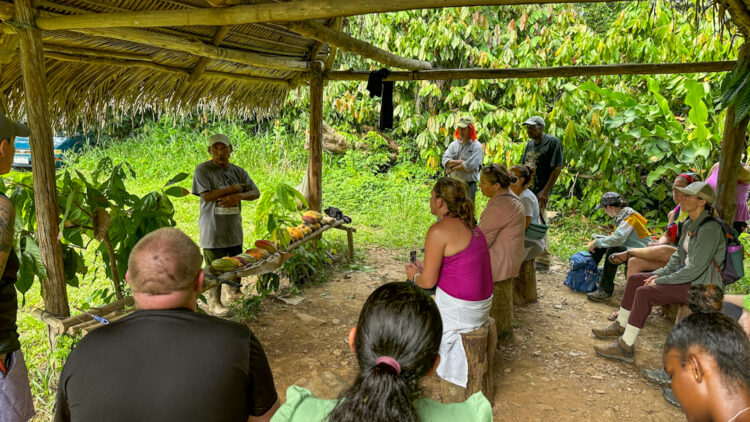
Group listening to Narcisso describe how organic cacao is grown.
We finished up at the farm and crossed the street to Che’il Mayan Chocolate to learn about the Maya way of making chocolate. Robert, our chocolate guide, gave us dried fermented cocoa beans to eat, then explained how the shells were removed from nibs by a fan, (one of the few steps not done by hand) and then placed on a quern (a traditional Maya grinding stone) to be ground into a paste. We tasted the chocolate at each step until we eventually created an 80% dark chocolate. Both Robert and Narcisio kept repeating that their chocolate is high in antioxidants and other nutrients — so eat your (good) chocolate!
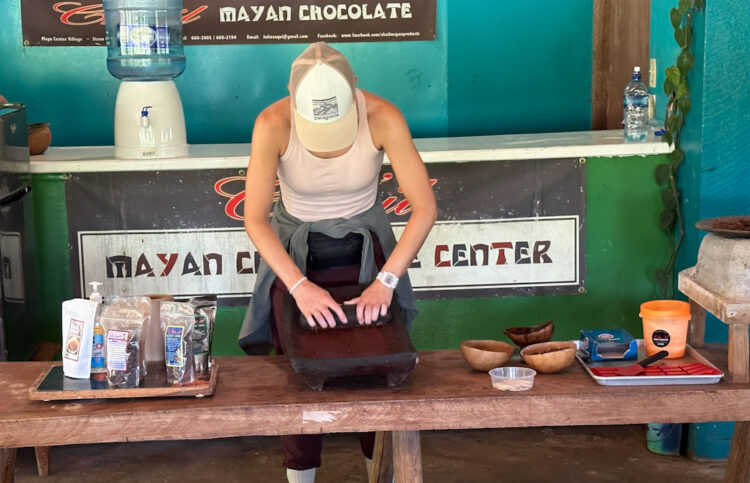
Meredith making chocolate.
After our chocolate lesson, we moved down the road and were able to walk around Aurora’s herbal shop before joining she and Ernesto at their restaurant. Ernesto started dinner off with telling us about the history of Cockscomb and Maya Center. In the early 1980s, Belize wanted to find a place to protect jaguars. A scientist, Alan Rabinowitz, was hired by the Belizean government to research jaguars in their natural habitat. Because of this push for jaguar conservation, traditional Maya land began being preserved and the Maya were forced to relocate to what is now Maya Center. Ernesto believed in the protection of jaguars but faced many challenges because of the relocation. He stepped in to be an advocate for both the preserve and the Maya people. He started the Women’s Center to help bring revenue to the Maya and to create a bridge between the community and the preserve. This informative talk was followed by a delicious dinner prepared by Aurora. We enjoyed stewed chicken, rice and beans and Belizean banana bread pudding!
We returned to our accommodations and some of us trekked into the jungle for a night walk. We saw several tarantulas and scorpions, found two coffee snakes, and a HUGE fig tree (we guess it was about 7 feet in diameter but only about 100 years old). We also saw a click beetle with two glowing green spots on its back and a branch that was covered in glow-in-the-dark fungi. We enjoyed a moment on the trail with flashlights off and sat in the peace and darkness of the jungle. When we returned to camp, it was time to pack up and sleep. Tomorrow, the beach!
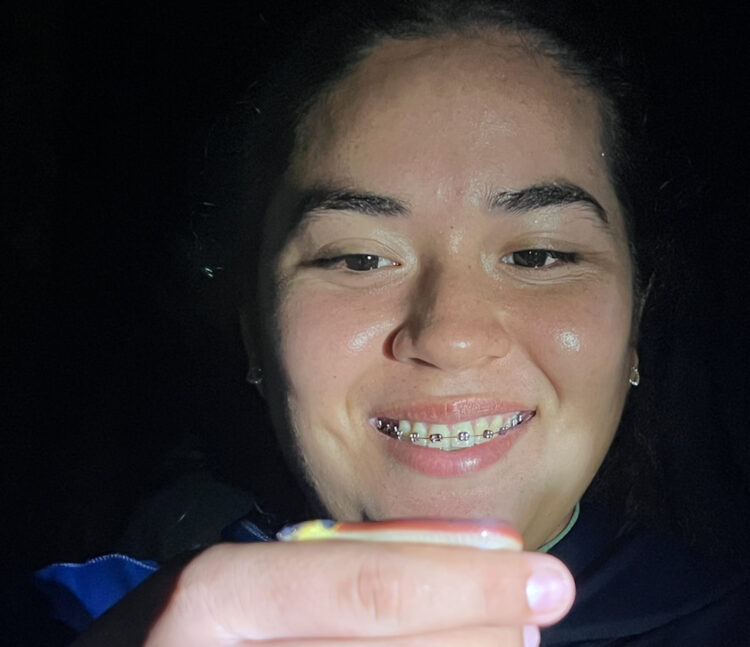
Neysy held her first snake!
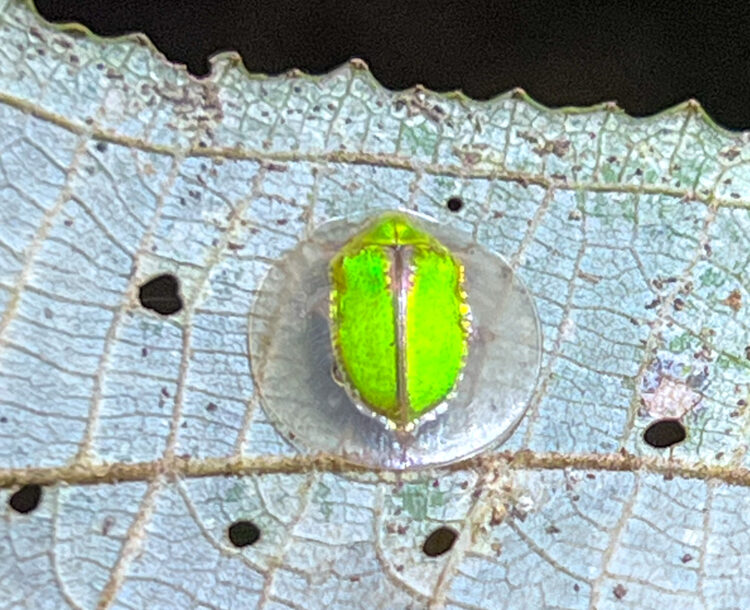
A strange (and large – about 1″ across) scale insect (we think).
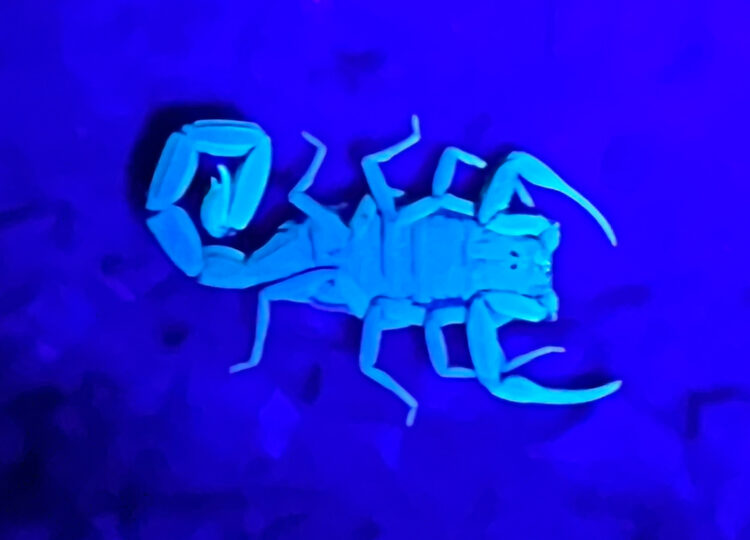
Small scorpion glowing under UV light.
